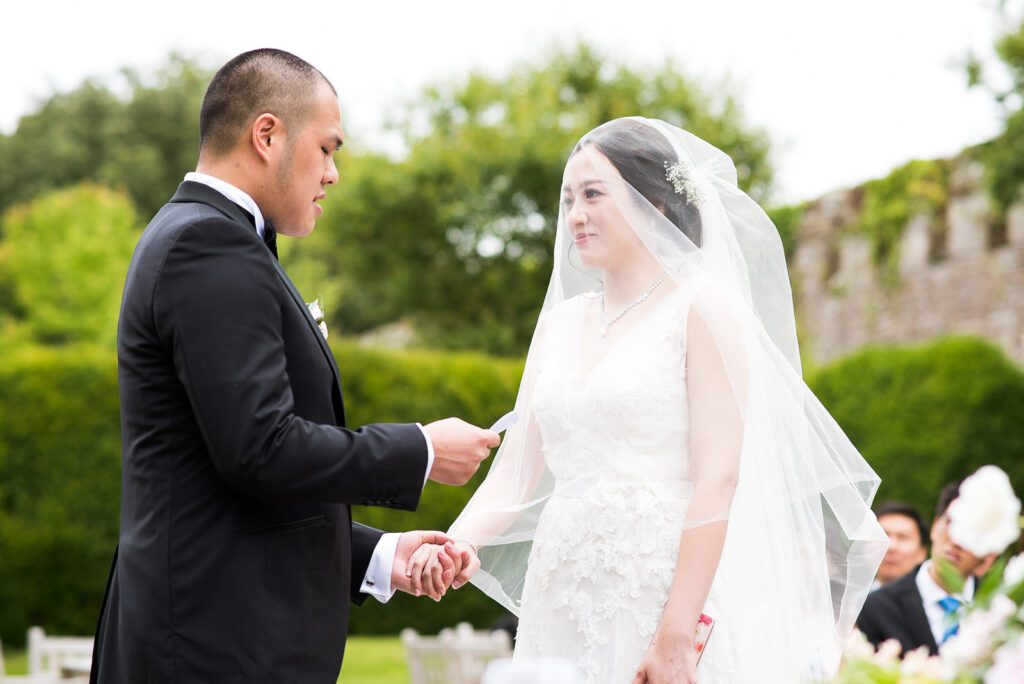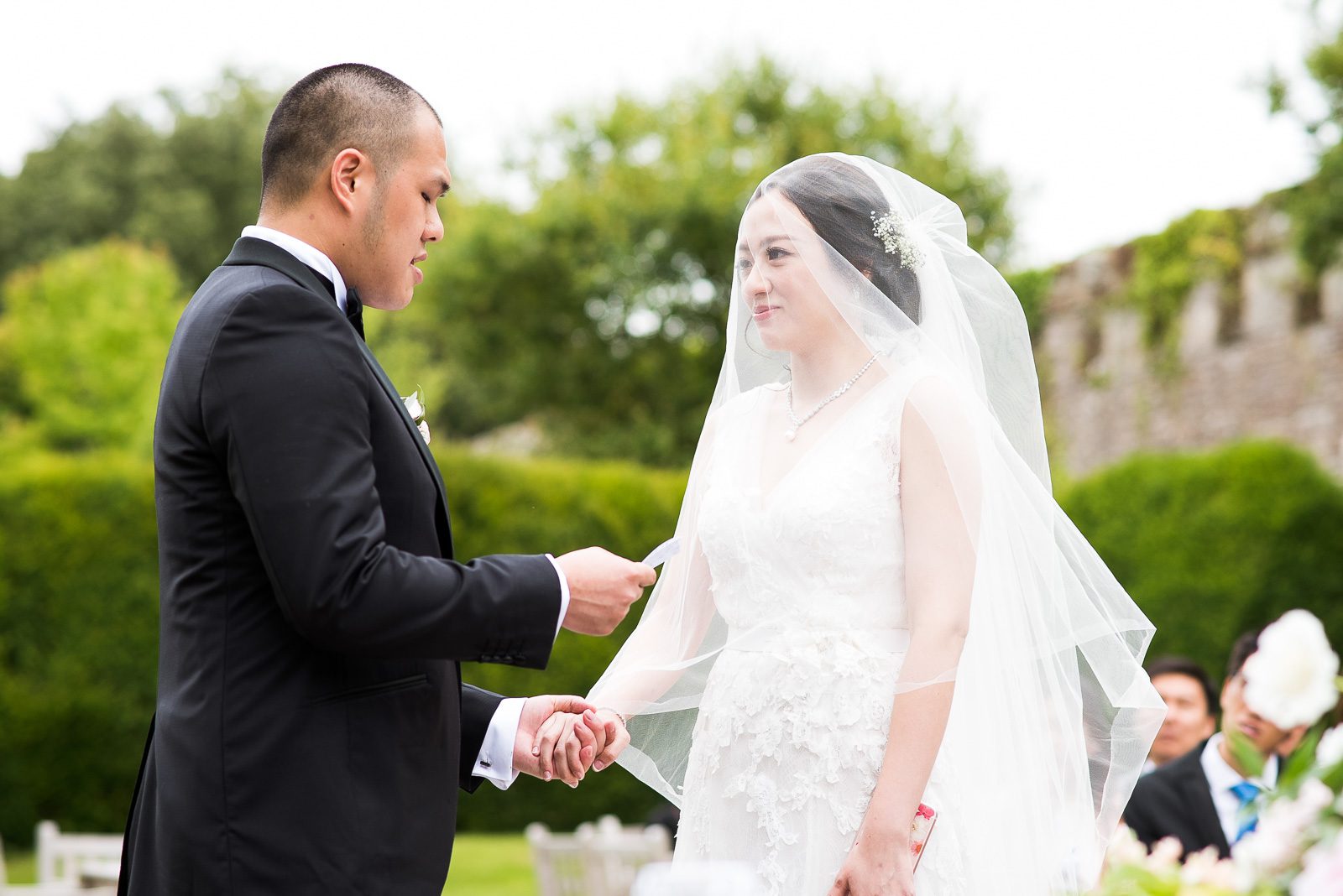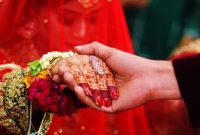Wedding traditions are a set of customs that are followed by couples who are getting married. These traditions vary from culture to culture, but they all have one common goal: to make the wedding day as special and memorable as possible. Some popular wedding traditions include exchanging rings, saying vows, and having a first dance.
While the origins of these traditions are often unknown, they continue to be practiced today because they add an extra layer of meaning and symbolism to the wedding ceremony.
It’s no secret that weddings are filled with all sorts of traditions. From the bride wearing white to the groom carrying the bride over the threshold, there are seemingly endless customs that have become synonymous with tying the knot. But where do these traditions come from?
Some of them date back centuries, while others are relatively new. Here’s a look at the origins of some popular wedding traditions:
Wearing White
The tradition of wearing white on your wedding day is thought to have started with Queen Victoria in 1840. She chose to wear a white gown when she married Prince Albert, and since then, white has become the go-to color for brides worldwide. While other colors were once considered appropriate for weddings (including black!), white is now seen as a symbol of purity and innocence.
Carrying The Bride Over The Threshold
This tradition dates back to medieval times when it was believed that if a bride stepped into her new home with her left foot first, she would be cursed with bad luck. To avoid this fate, grooms would carry their brides over the threshold instead!
Nowadays, it’s more about symbolism than superstition – carrying your bride over the threshold is seen as a sign of your commitment to always protect and cherish her.
Wedding History Facts
Your wedding is supposed to be one of the most important days of your life. It’s a day when two people come together in front of their families and friends to declare their love for each other. But have you ever wondered where weddings came from?
What are some of the history behind this sacred institution? Here are some interesting facts about the history of weddings:
1. The tradition of getting married in a white dress started with Queen Victoria in 1840. Until then, brides simply wore their best dress, regardless of the color.
2. The concept of a “wedding cake” dates back to Roman times, when guests would bring small cakes made out of wheat or barley to the bride and groom as a symbol of fertility.
3. In medieval England, it was traditional for guests to throw things at the bride and groom as they left the ceremony. This was supposed to ward off evil spirits and bless the newlyweds with good luck.
4. Wedding rings were originally made out of iron because it was believed that iron had magical properties that could protect the wearer from evil spirits.
Dark Origins of Marriage
Marriage is one of the oldest and most sacred institutions in human history. But like everything else, it has a dark side. For centuries, marriage has been used as a tool of oppression, control, and even violence.
In many cultures around the world, women have been treated as property of their husbands or fathers. They were expected to obey them without question and were often not even allowed to leave the house without permission. In some parts of the world, this is still the reality for many women today.
Marriage was also used as a way to seal business deals or forge political alliances between families. This often led to arranged marriages where the bride and groom had no say in who they married. In some cases, they didn’t even meet each other until their wedding day.
And let’s not forget about dowries. In many cultures, a dowry was required for a man to marry a woman. This could be anything from money or land to livestock or even slaves.
The practice of dowry is still alive in some parts of the world today and has led to tragic consequences for many women who are unable to meet their husband’s family’s demands.
So yes, marriage has a dark history . But it’s also important to remember that marriage can be and has been a force for good in many cultures as well .
It’s an institution that can bring love , happiness , and stability into our lives .
Where Did Throwing Rice at Weddings Originate
Throwing rice at weddings is a common tradition in many cultures around the world. But where did this tradition come from?
There are a few theories about the origin of throwing rice at weddings.
One theory suggests that the tradition began as a way to ward off evil spirits. Evil spirits were believed to be attracted to the noise and commotion of a wedding celebration. Throwing rice was thought to scare them away.
Another theory suggests that throwing rice is a symbol of good luck and fertility. In some cultures, it is believed that the more rice you throw, the more children you will have. Rice is also a symbol of abundance and wealth, so throwing it at a wedding is seen as bestowing good fortune upon the newlyweds.
Whatever its origins, throwing rice at weddings has become a popular tradition in many cultures across the globe. It’s a fun way to show your support for the happy couple and wish them all the best in their new life together!
Wedding Traditions Explained
Wedding traditions are a huge part of what makes a wedding special. They are also a great way to add some personalization and fun to your big day! Here is a rundown of some popular wedding traditions and their origins:
Bouquet Toss: The bouquet toss is a popular tradition that allows single ladies at the wedding to compete for the bride’s bouquet. The origin of this tradition is unknown, but it is thought to date back to medieval times.
Garter Toss: Similar to the bouquet toss, the garter toss allows single men at the wedding to compete for the bride’s garter.
This tradition is also thought to date back to medieval times. It was believed that if you caught the bride’s garter, you would be the next one in line to marry.
Wedding Cake: The wedding cake has been a part of weddings for centuries.
The origin of the wedding cake can be traced back to ancient Rome, where bread was broken over the head of the bride as a symbol of good luck. Today, wedding cakes are often decorated with symbols of love, such as hearts or doves.
First Dance: The first dance between newlyweds is another long-standing tradition.
In years past, this dance was used as an opportunity for guests to get a glimpse of how compatible the new couple was (by observing their dancing skills). Nowadays, couples often choose songs that have personal meaning to them or reflect their relationship story.
First Wedding Tradition
When two people decide to spend the rest of their lives together, it is a momentous occasion. A wedding is the first step in solidifying their commitment to one another. While each couple’s wedding day is unique, there are some traditions that are commonly followed.
The first tradition is the exchange of rings. This symbolizes the unending love and devotion that the couple has for one another. The rings are also a physical representation of their eternal bond.
Another common tradition is the lighting of a unity candle. This candle represents the joining of two hearts and families into one unit. It is usually lit by the bride and groom together during the ceremony.
One final tradition that is often seen at weddings is something old, something new, something borrowed, and something blue. These items are typically worn or carried by the bride on her big day. They represent different aspects of luck and love.
Old Wedding Traditions
It’s no secret that weddings are steeped in tradition. From the moment a couple gets engaged, they are bombarded with expectations from family, friends, and society about how their wedding “should” look and feel. While some of these traditions are still relevant and meaningful today, others have become outdated and even impractical.
Here is a look at some old wedding traditions and why couples today may choose to skip them:
1. Wearing a White Dress:
The tradition of wearing a white dress on your wedding day started in the Victorian era as a symbol of purity and innocence.
However, many brides today feel that this tradition is outdated and instead opt for dresses in colors that represent their personality or match the theme of their wedding.
2. Getting Married in a Church:
Getting married in a church was once seen as the most proper way to tie the knot. However, nowadays couples are getting married in all sorts of unique venues, from barns to beaches. This change is likely due to the declining popularity of organized religion among millennials.
3. Having Your Parents Pay for the Wedding: Traditionally:
it was expected that the bride’s parents would pay for the majority (if not all) of the expenses related to her wedding day. Today, however, more and more couples are footing the bill themselves or splitting costs with their families equally. This shift is likely due to changing economic circumstances and shifting gender roles within society.
History of Wedding Traditions in America
When it comes to wedding traditions, America certainly has a rich history. From the early days of colonists getting hitched in simple ceremonies officiated by Puritan ministers, to the elaborate Victorian-era weddings complete with bridesmaids and flower girls, American weddings have always been a reflection of the times.
One of the most enduring traditions is the white wedding dress.
While Queen Victoria popularized the look in the 1840s when she wore a white gown to wed Prince Albert, it wasn’t until after World War II that white became the de facto color for American brides. White symbolized purity and innocence, qualities that were highly prized in post-war America.
Another tradition that got its start in Victorian times is the tiered wedding cake.
While today’s cakes are often works of art, they pale in comparison to some of the elaborate confections from centuries past. Cakes back then could be several feet tall and decorated with everything from fruit and flowers to miniature replicas of the bride and groom.
Of course, no discussion of American wedding traditions would be complete without mention of something old, something new, something borrowed, and something blue.
This custom dates back to medieval England when it was believed that these items would bring good luck to the marriage. Today, brides often incorporate this tradition by wearing a family heirloom on their big day or carrying a handkerchief borrowed from a loved one. And as for something blue?
Well, that’s up to interpretation!
Weird Wedding Traditions
Weird wedding traditions are aplenty, and if you’re looking to add a dash of the unusual to your big day, there are plenty of options to choose from. From blackening the bride’s face with soot to breaking glass, these traditions are sure to get your guests talking.
Blackening the Bride: In some Scottish weddings, it is traditional for the bride’s face to be smeared with soot or ashes on the morning of her wedding day.
The thinking behind this is that it will ward off evil spirits and ensure a happy marriage. If you’re not keen on having your face blackened, you could opt for a more subtle version of this tradition by having your bridesmaids draw hearts on your cheeks with red lipstick instead.
Breaking Glass: This Jewish tradition is said to bring good luck to the newlyweds and ward off evil spirits.
The groom breaks a glass by stomping on it with his right foot just after he says “I do.” Guests then shout “Mazel Tov!” To make things even more interesting, you could have the groom break two glasses – one for each shoe!
Carrying Your Bride Over the Threshold: This tradition dates back to medieval times when it was believed that evil spirits resided in thresholds. Carrying your bride over the threshold would protect her from these spirits and ensure a long and happy marriage. Today, many couples still carry out this tradition as it is seen as good luck.
If you’re feeling particularly strong, you could try carrying your bride up a flight of stairs too!

Credit: www.oaksmanorevents.com
When Did Modern Wedding Traditions Start?
While the specific traditions of weddings have varied throughout history, some aspects of weddings are universal. Wedding ceremonies have always been a way to mark the beginning of a new phase in a couple’s life, and to celebrate their commitment to each other. The exchange of rings is one of the most ancient wedding traditions, dating back to Ancient Egypt.
In more recent history, the white wedding gown became popularized in the 19th century thanks to Queen Victoria. Today, couples continue to put their own spin on traditional wedding customs while still maintaining the core elements that make a wedding a special and memorable event.
What is the Purpose of the Traditional Wedding?
The purpose of the traditional wedding is to celebrate the union of two people who are in love and to cement their relationship with a public declaration and commitment. It is also seen as a way to share the joy of this special occasion with family and friends. The bride and groom exchange marriage vows, which are promises to love and cherish each other for the rest of their lives.
They may also exchange rings as a symbol of their everlasting love. A typical Western wedding ceremony usually includes a procession of the bride down the aisle, Exchange Of Vows, Ring Exchange, Unity Candle lighting, signing of the marriage register And finally, the pronouncement Of marriage by the officiant.
Are Weddings Based on Religion?
No, weddings are not based on religion. While many couples choose to have a religious ceremony, it is not a requirement. You can have a civil ceremony or even a self-uniting ceremony.
Interesting Facts: The Disturbing History of Wedding Traditions
Conclusion
Wedding traditions are a huge part of many cultures around the world. But where do they come from? In this blog post, we take a look at the origins of some popular wedding traditions.
For example, did you know that the tradition of throwing rice at the end of a wedding ceremony actually comes from ancient Rome? Rice was thought to represent fertility and good luck, so guests would throw it at the newlyweds as they left the ceremony.
Another popular tradition is the bride wearing something old, something new, something borrowed, and something blue.
This one dates back to Victorian England, when brides would carry lucky charms in their bouquets to ward off evil spirits. The old item represented continuity with the past, the new represented hope for the future, borrowing represented goodwill from friends and family, and blue was for fidelity and love.
So next time you’re at a wedding, take a moment to think about where these traditions come from – you might be surprised!







